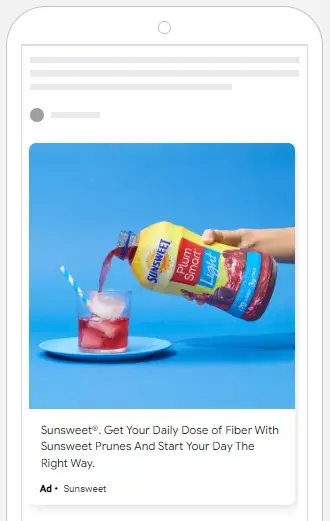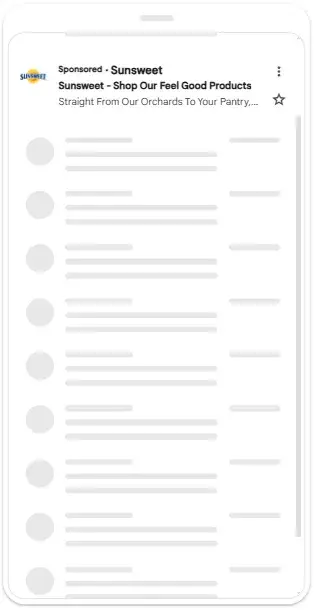Google Demand Gen: Understanding the Evolution of Video Action Campaigns in 2025
Google announced a major shift in their ad platform: YouTube video action campaigns will be discontinued, rolling into the Demand Gen campaign type launched in 2023.
This move comes as Google looks to consolidate campaign types under the guise of simplified ad campaign management. The result however is far from this, as campaign types like Demand Gen or Performance Max take control away from advertisers.
The time to prepare is now, so let’s take a look at Google Ads Demand Gen campaigns.
What Does Demand Gen Mean?
Definition: Demand generation is the mechanism that drives intent to purchase a product or service as a result of increased brand awareness and consideration.
How it Differs from Demand Capture
Where Google Search is highly effective at capturing demand, Demand Gen campaigns focus on creating new demand among potential customers through ad frequency (brand awareness) and site engagement (brand consideration).
Key Benefits of Google Ads Demand Gen:
- Efficient reach through low CPM (cost per thousand impressions)
- Cost-effective engagement via low CPC (cost per click)
- Versatile ad placement across discovery ads and video ads
Google Demand Gen Fundamentals
Placements
Introduced in 2023, Google Demand Gen was introduced as a replacement for Discovery campaigns which distributed ads in Google’s native placements (discovery ad). Google Discovery Ads ran across several products including:
Discovery Ad Placements:
- Discover Tab (on Google App & Pixel Phones)
- Youtube In-Feed
- Gmail (Social & Promotions tabs)
Discover Tab

Youtube In-Feed

Gmail

Similar to programmatic native ads, discovery ads were image and text based. This allowed discovery ads to be distributed widely and efficiently, but often lacked impact.
Fast forward to today, Demand Gen Ads incorporate video to expand reach across their inventory and reach users in new formats.
Enhanced Video Placements:
- Youtube Video Ads
- Youtube Shorts
- Google Display Video Partners
Youtube Video Ads

Youtube Shorts

Google Display Video Partners

Optimization goals
Demand gen campaigns offer two primary optimization models for advertisers:
Maximize Clicks
This optimization model helps demand gen ads reach broader audiences, ideal for:
- New customer acquisition
- Brand awareness campaigns
- Top-of-funnel marketing strategy
Maximize Conversions
Perfect for demand generation campaigns targeting:
- Existing customers
- High-intent audience segments
- Bottom-of-funnel conversion goals
Maximize clicks
Max clicks prioritizes ad engagement, making it particularly effective at driving high volumes of clicks. To this end it has a few characteristics:
- High delivery in Gmail
- Email opens count as clicks, often lead it to optimize for these placements.
- Low cost per impression (CPM)
- Max clicks has a larger target audience, making delivery more efficient.
- Lower user engagement
- Given a broader audience, overall intent is lower.
These shouldn’t be looked at as detrimental qualities however. Rather, a guide for how to use the bid model:
- Gmail ads can work well to increase awareness, but don’t expect them to be the last click driver of sales or leads.
- Low impression cost means whether ads drive conversions or not, users are being constantly reminded of your brand.
- Low engagement doesn’t mean no engagement. Looking at a metric like engaged sessions can be a good measure of general impact.
Best Practices
- Utilize highly engaging forms of content (i.e. blogs, articles, guides) that have good retention.
- Use long form video to deliver value beyond an ad click.
- Create campaigns that leverage a single media type (i.e. video-only or static-only). This can help control inventory delivery.
Max Conversions / Conversion Value
Max conversions prioritizes users that have expressed intent, whether by browsing your website (or competitors), searching particular keywords, or falling within a demographic that converts well.
See The Problem with Target CPA for more on how conversion optimization works.
As a result, these campaigns tend to:
- High cost per impressions (CPM)
- As the target audience shrinks, the cost to reach those individuals increases.
- Propensity to target existing customers
- Most likely to convert individuals are often past site visitors or customers.
- See Why Google’s Performance Max is Secretly A Retargeting Engine for a more detailed explanation.
- High user engagement
- Due to targeting high intent users (those that are already interested)
This leads to an interesting phenomenon – conversion optimization does not generate demand – rather it looks to capture it. To this end, using max conversions should be used to:
- Reach a smaller but highly considered audience.
- Leverage Google’s ad type that appeals most effectively to each user.
Best Practices
- Use retargeting audiences to build frequency with those closest to converting.
- Focus on static assets vs video. Video can be very expensive when retargeting.
- Use strong calls to action, entice with value like guides, webinars, discounts/incentives.
Demand Gen Challenges and Limitations
Demand generation only works if potential customers are paying attention. To that end, marketers face several challenges:
- Ad Spend Control
- Demand gen relies on machine learning bid models (discussed above) that deliver ad spend in channels where it will generate the most results.
- Best Practice: Advertisers can take back some of this control by only using specific ad assets in each demand gen campaign.
- Multi Format Ads
- Ad groups that include image and video ads are harder to analyze due to limited data provided into each asset’s performance.
- Best Practice: Only create ads with one asset type to better track performance.
- Traffic Quality
- Click-optimized campaigns typically drive poor onsite engagement, but highly engaged audiences are very expensive to reach.
- Best Practice: Run both campaign types and use a 3rd-party platform (i.e. Google Analytics) to analyze the cost per engaged visitor.
- New vs Existing Customers
- Conversion-optimization prioritizes existing customers as they are ‘more likely to convert’
- Best Practice: Ensure audience exclusions are up to date, or run click-optimized campaigns for prospecting.
Demand Gen Best Practices
So how can you implement demand gen into your marketing strategy? Some best practices for a general approach are:
- Strategic Budget Testing
- Start with 5-10% of your total campaign budget
- Monitor demand gen performance against existing campaigns
- Track both discovery ads and video ad performance
- Extended Testing Period
- Allow sufficient time for demand generation results
- Monitor how different potential customers respond
- Track both immediate and delayed campaign metrics
- Campaign Structure
- Create distinct ad groups for ad formats.
- Better analyze results of each creative/ad type.
- Optimization Testing
- Run conversion and click optimized campaigns at the same time.
- Measure results over both in-platform and in 3rd-party platforms like Google Analytics.
- Creative Testing Framework
- Run at least 3 creative variations (up to 5 per ad group)
- Allow machine learning to optimize (up to 2 weeks).
- Keep top 2 variations, and continue testing new ads.
What to Expect in 2025
The shift toward automation in Google Ads is accelerating. What began with Performance Max campaigns in 2019 has evolved into a comprehensive strategy by Google to consolidate and automate campaign management.
For Demand Gen, it began with the shift from Discovery campaigns, and the upcoming deprecation of YouTube Ads conversion campaigns in 2025 marks another significant milestone in this journey.
The key to success lies not in resisting these changes, but in adapting your marketing strategy now. By starting small, testing methodically, and focusing on creative excellence, advertisers can position themselves to thrive in this new automated landscape while maintaining performance standards.
Marketers must start testing the new functions in Demand Gen campaigns now to avoid negative impacts to performance in the future. While this challenges existing marketing strategy, it also provide new opportunities to learn how best to engage with prospective audiences.
Those who embrace these changes early, armed with a clear testing strategy and performance benchmarks, will be best positioned to capitalize on the opportunities that Demand Gen campaigns offer in 2025 and beyond.
